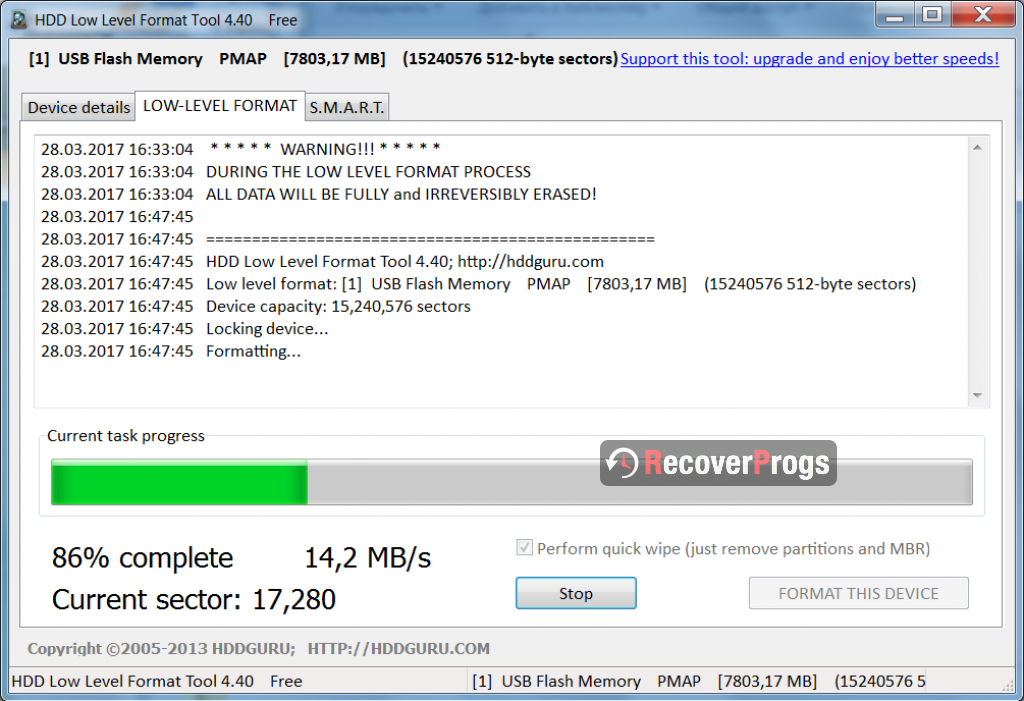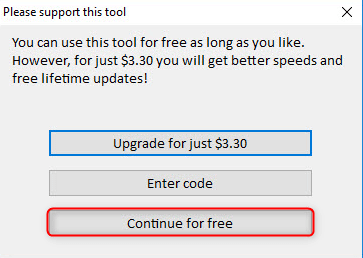On Windows 10, whenever you get a new hard drive, it's important to format it before you start dumping files. The reason is that you want to ensure that the drive is working correctly, completely clean, and free of malware or malicious code that may harm your installation and personal files.
And it's not just a good practice for new drives, but for used hard drives too (especially those previously connected to a different OS), as using the proper formatting, you can avoid issues and compatibility problems.
Buy chocolatier game online. Basically, when you format a hard drive, you're deleting all the data residing on the storage, and you start clean with a compatible file system (including NTFS, FAT32, or exFAT), which in this case Windows 10 understands to read and write data.
Download HDD Low Level Format Tool. Utility for low-level hard disk drive formatting, with support for SATA, IDE or SCSI hard disks, as well as removable drives of any size. Windows 10 32/64. How to perform a secure disk wipe with Windows 10's Format command by Greg Shultz in Software on February 8, 2017, 5:46 AM PST No need to track down a third-party hard drive wipe utility. A System Repair Disc can be created from any working Windows 7 computer and can then be used to write zeros to any drive using the included format command, including the primary drive, no matter what Windows operating system is on the computer.
There are many methods available to format a hard drive, but using Disk Management could be considered one of the best options for most users.
In this Windows 10 guide, we'll walk you through the steps to correctly format a traditional hard drive or Solid-State Drive (SSD), whether it already has a partition or it was never initialized.
How to format existing partition using Disk Management
If you have a hard drive already configured with a partition, you can just format the existing partition to erase its content and start fresh with a clean drive.
To format a partition using Disk Management, use these steps:
- Open Start.
- Search for Disk Management and click the top result to open the experience.
Right-click the new hard drive and select the Format option.
- In the 'Value label' field, type a descriptive name for the drive.
- Use the 'File system' drop-down menu, and select NTFS (recommended for Windows 10).
- Use the 'Allocation unit size' drop-down menu, and select the Default option.
Check the Perform a quick format option.
Quick Tip: While performing a quick format wipes the drive faster, it doesn't check if the drive is damaged. On the other hand, when clearing the option, a full format will be performed, which not only wipes the drive clean, but it'll also check for bad sectors. It's an option that could take several hours, but it's a good practice to make sure the hard drive is in working conditions.
- Unless necessary, clear the Enable file and folder compression option.
- Click the OK button.
- Click the OK button again in the warning message.
Once you've completed the steps, the system will format the selected partition on the drive, and then you can start using it to store files.
How to create and format new partition using Disk Management
If you happen to have a hard drive that was never formatted, you'll need to initialize and create a new partition before you can format it.
Typically, you'll know when a hard drive doesn't have a partition, because it'll not appear in File Explorer, and on Disk Management, it'll appear as unallocated space.
The program is Full and also the popular software for creating 3D models, sketches, animations as well as a lot more.The Autodesk 3ds Max 2019 Crack is filled with effective features. Autodesk 3ds max 2014 keygen.

To properly set up a blank hard drive, use these steps:


Free Low Level Format Tool
- Open Start.
- Search for Disk Management and click the top result to open the experience.
Right-click the hard drive marked as 'Unknown' and 'Not Initialized,' and select Initialize Disk.
- Check the disk to initialize.
Select the partition style:
- Master Boot Record (MBR) for hard drives smaller than 2TB in size.
- GUID Partition Table (GPT) for hard drives larger than 2TB in size.
- Click the OK button.
Right-click the Unallocated space, and select the New Simply Value Windows upgrade error 0x80004005. option.
- Click the Next button.
Under the 'Simple volume size in MB' section, leave the default size if you're planning to use the entire hard drive to store files. Otherwise, specify the amount of space in megabytes that you want to allocate for the partition.
- Click the Next button.
Use the 'Assign the following drive letter' drop-down menu to select a letter for the new hard drive.
- Click the Next button.
- Use the 'File system' drop-down menu, and select NTFS (recommended for Windows 10).
- Use the 'Allocation unit size' drop-down menu, and select the Default option.
- In the 'Value label' field, type a descriptive name for the drive.
Check the Perform a quick format option.
Quick Tip: If you prefer a full format, clear the quick format option. Just keep in mind that depending on the size of the drive, it can take hours to finish.
- Unless necessary, clear the Enable file and folder compression option.
- Click the Next button.
- Click the Finish button.
After completing the steps, the new hard drive will be initialized, partitioned, and properly formatted.
Browse fast on your Android phone and tablet with the Google Chrome browser you love on desktop. Android download htc.
If you're having trouble using Disk Management to format a hard drive, because of data corruption or other severe issues, you can use the DiskPart command-line tool to fix the problem.
While we're focusing this guide on Windows 10, the steps outlined above will also work on Windows 8.1 and Windows 7.
More Windows 10 resources
Low Level Format Drive Windows 10
For more helpful articles, coverage, and answers to common questions about Windows 10, visit the following resources:
Low Level Format Tool Windows 10
I'm going to be performing a few upgrades, to a family members computer tomorrow.
I have backed up their data and I would like to format their old hard drive.
The hard drive has begun to re allocate sectors, and other than the data I have already backed up, they are not looking to keep their old installation of windows. (Therefore there is no need to defragment the drive, right?)
I realise that the drive will fail, in the near, or near-distant future. Regardless of this I wanted to know if a low level format would be better than a format through windows?
I was planning, to perform the low level format, using either the Samsung or Seagate Hard drive health checker utility.
Alternatively I could format the hard drive normally with Windows (during the installation of Windows 10, or after using disk manager)
I'm also aware there are windows utilities and command prompt options to write zero's to the drive.
The wipe does not need to be super secure, so one pass will do (and any alternative method which completes one pass) However, the format (of whatever variety) does need to address the re allocating / pending (which I know can't necessarily be fixed, but at least pending sectors can be sorted out right?)
Please provide with with advice on the best route to take? Will I get away with simply deleting windows partitions and then formatting the drive during installation? Or should I get more involved?